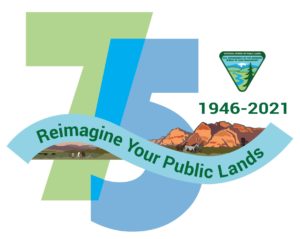FLIP-MA?
No Comments
“Flip-ma” is how you pronounce the acronym for the Federal Land Policy and Management Act (FLPMA) of 1976. Today marks its 45th anniversary. What is it, and why should we care?

America’s public lands represent 640 million acres, managed by four different agencies. The oldest of them is the US Forest Service (USFS), established in 1905 to manage the National Forest System (192 million acres) and “use these lands wisely for the present and future generations” via forestry, grazing, and mining. The National Park Service (NPS) is the most well-known and beloved, but out of the four, they manage the smallest area (79.8 million acres). By contrast with the USFS, the NPS mission is to:
conserve the scenery and the natural and historic objects and the wildlife therein and to provide for the enjoyment of the same in such manner and by such means as will leave them unimpaired for the enjoyment of future generations.That mission was assigned to the NPS at its creation in 1916 through a federal law called the National Park Service Organic Act. In addition, the US Fish and Wildlife Service (USFWS) manages for conservation the National Wildlife Refuge System (95 million acres of land, plus oceanic waters). The Bureau of Land Management (BLM) is the lesser known agency and its mission is less obvious. What makes that agency important is that overseeing 248 million acres, about 10% of the land surface of the U.S., it is the largest land caretaker in the country. The FLPMA could be viewed as the BLM’s organic act – its mission statement as a government agency.
To understand the lower-profile status of the BLM, we must go back to its history as caretaker of leftover lands. After World War I, public lands in America fell into three categories. The USFS forests for multiple uses, the NPS parks for conservation and recreation, and the rest of federal lands. The general policy was to continue “disposing” of them under the auspices of the General Land Office by sale to private interests, states, or transfer to another federal agency. However, due to their ruggedness and aridity, nobody wanted to buy those lands for development or farming, and the technology for locating fossil fuels had yet to be invented. Nor was there any interest in putting them in national forests or national parks. In 1934, Congress determined that they had interim value (pending disposal) for grazing and established the (Taylor) Grazing Service to arbiter rights. In 1946, the General Land Office and Grazing Service merged into the Bureau of Land Management, celebrating its 75th anniversary this year.

In 1976, thirty years after its establishment, the BLM was finally assigned a mission with the FLPMA (full text). Today, the vast majority agree that public lands that belong to all Americans should remain in public ownership and not be made available for sale. During the frontier years, the West was for grabs. Given that states lack the resources to manage them effectively, even today, the transfer of federal lands to the states would eventually result in the sale to private interests. Repelling thousands of out-of-date land management laws, including the Homesteading Act of 1864, the FLPMA stated for the first time that:
public lands be retained in Federal ownership unless […] disposal of a particular parcel will serve the national interest.
Today, we recognize the intrinsic value of the BLM lands for public use. It was the FLPMA that formally established the policy of managing those lands in a resource-oriented, multiple-use way, to:
protect the quality of the scientific, scenic, historical, ecological, environmental, air and atmospheric, water resource, and archaeological values; where appropriate, protect and preserve certain public lands in their natural condition; provide food and habitat for fish and wildlife and domestic animals; provide for outdoor recreation and human occupancy and use.Not only does the BLM manage more public lands than any other federal agency, only a tiny portion of them (currently less than 15%) is protected – as opposed to 100% for the NPS and USFWS and 25% for the USFS. Therefore, the BLM lands offer the most significant conservation opportunity of our times. We could make considerable strides towards the 30×30 initiative of conserving 30% of our lands and waters by 2030 by just increasing the percentage of protected lands with the BLM system. The FLPMA paved the way for that to happen by recognizing the conservation value of those lands.
If the BLM was to transition towards a conservation-minded agency, per Secretary of the Interior Bruce Babbitt’s vision, it needed to receive something to conserve. That something came in 1996 with the proclamation of Grand Staircase-Escalante National Monument, the first national monument assigned for management to the BLM. In 2000, the establishment of the National Conservation Lands under the care of the BLM created our newest network of protected lands. They would include almost all the landscape-scale national monuments proclaimed after 1996, adding a total of more than 7 million acres of newly protected lands, more than in any other system. The Antiquities Act (discussed at great length here) made their proclamation possible, but without the framework of the FLPMA, we wouldn’t have protected most of the national treasures that are the subject of Our National Monuments.

Calf Creek, Grand Staircase-Escalante National Monument, photographed in 1996 on 5×7 film

